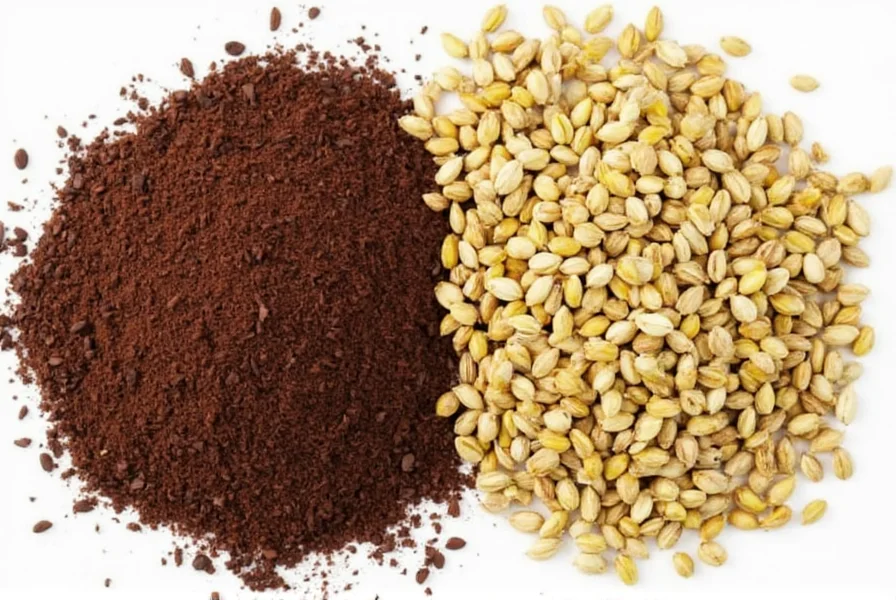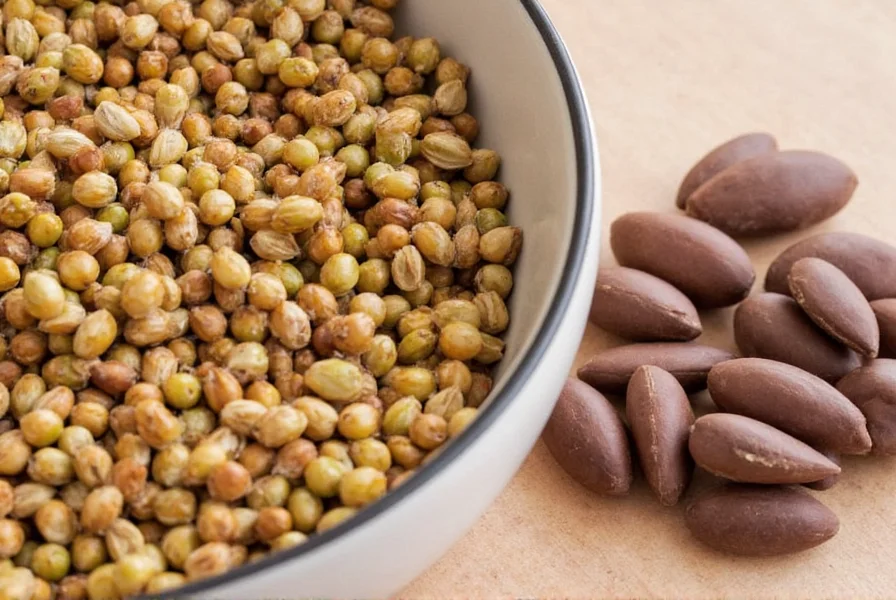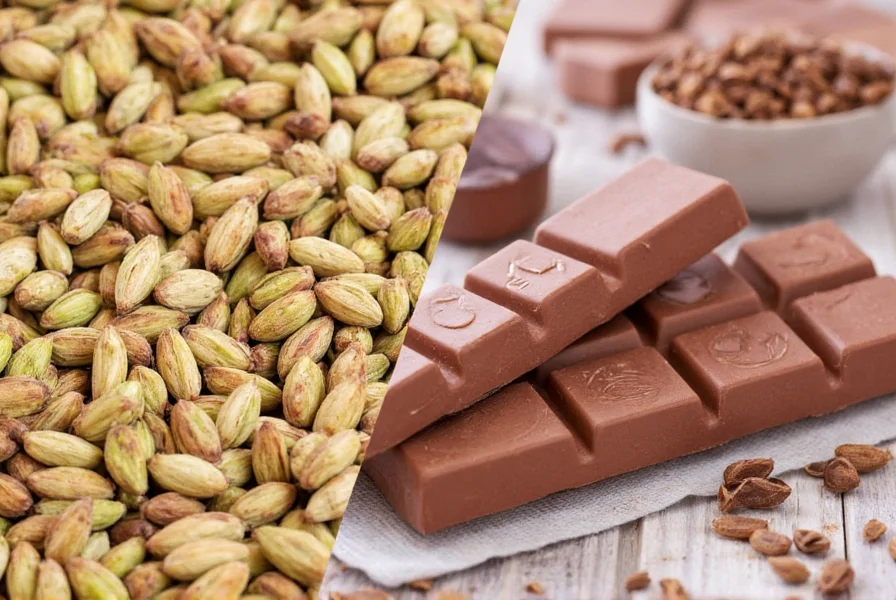The unexpected yet perfect marriage of cacao and cardamom represents one of the most sophisticated flavor pairings in global cuisine. While chocolate typically pairs with vanilla or chili, the addition of cardamom creates a uniquely balanced experience that elevates both ingredients beyond their individual characteristics. This pairing works because cardamom's complex flavor profile—featuring citrus, floral, and slightly peppery notes—cuts through cacao's natural bitterness while enhancing its fruity undertones.
The Flavor Chemistry Behind Cacao and Cardamom
Understanding why cacao and cardamom work so well together requires examining their chemical composition. Cacao contains over 500 flavor compounds, including phenylethylamine and theobromine, which contribute to its complex bitter-sweet profile. Cardamom, meanwhile, contains cineole and limonene—volatile compounds responsible for its distinctive citrus and herbal notes.
When combined, these compounds interact in fascinating ways. The warm, slightly spicy elements of cardamom help mellow cacao's natural acidity, while cacao's richness provides a perfect canvas for cardamom's more delicate floral notes. This creates what food scientists call "flavor layering"—where each ingredient enhances specific aspects of the other without overwhelming the overall experience.

Historical and Cultural Significance
The pairing of cacao and cardamom has deep historical roots that span multiple continents. While cacao originated in Mesoamerica, cardamom traveled the ancient spice routes from India to the Middle East. The combination likely emerged when European explorers brought cacao back from the Americas and spice traders introduced cardamom to new markets.
In Scandinavian countries, particularly Sweden and Norway, cardamom has been traditionally used in baking for centuries. When chocolate became more widely available in the 19th century, bakers naturally incorporated it into their cardamom-flavored recipes. Meanwhile, in the Middle East, cardamom has long been added to coffee and other beverages, and this tradition extended to chocolate drinks as cacao became more accessible.
| Region | Traditional Use | Modern Application |
|---|---|---|
| Scandinavia | Cardamom in baked goods | Cacao-cardamom chocolate buns |
| Middle East | Cardamom in coffee | Spiced hot chocolate with cardamom |
| Mexico | Traditional chocolate spices | Modern mole sauces with cardamom |
Culinary Applications and Pairing Techniques
Professional chefs and home cooks can maximize the cacao and cardamom pairing through several techniques. The key is balancing the intensity of both ingredients to create harmony rather than competition.
For beverages, use freshly ground cardamom seeds rather than pre-ground powder to preserve volatile flavor compounds. Add cardamom early in the preparation of hot chocolate to allow its flavors to fully infuse. A general guideline is 1-2 crushed cardamom pods per 2 ounces of cacao for a subtle enhancement, or 3-4 pods for a more pronounced spice note.
In baking, consider the form of cacao you're using. Dark chocolate (70% cacao or higher) pairs better with cardamom than milk chocolate, which can become overly sweet. When using cocoa powder, increase the cardamom slightly as the powder lacks the fat content that helps carry cardamom's essential oils.
Health Considerations of Cacao and Cardamom
Both cacao and cardamom offer potential health benefits that may complement each other when consumed together. High-quality cacao (70% or higher) contains flavonoids with antioxidant properties, while cardamom contains compounds with potential anti-inflammatory effects.
Research suggests that the combination may offer synergistic benefits. A 2022 study published in the Journal of Food Science found that certain compounds in cardamom may enhance the bioavailability of cacao's flavonoids. However, these potential benefits apply primarily to minimally processed cacao and whole cardamom seeds—not highly processed chocolate products with added sugars and fats.
When preparing cacao and cardamom beverages or recipes, avoid excessive added sugars to maximize potential health benefits. The natural sweetness of high-quality cacao combined with cardamom's complex flavor profile often reduces the need for additional sweeteners.

Practical Tips for Home Preparation
Creating the perfect cacao and cardamom combination at home requires attention to quality and preparation methods. Start with high-quality ingredients: use dark chocolate with at least 70% cacao content or premium cocoa powder, and fresh green cardamom pods (which have superior flavor to pre-ground powder).
To maximize flavor extraction, lightly crush cardamom pods before use to release essential oils. For hot beverages, add crushed cardamom to cold milk or water and slowly heat to just below boiling, allowing 5-7 minutes for infusion before adding cacao. This gentle heating preserves delicate flavor compounds that high heat would destroy.
When baking, consider adding cardamom to both dry and wet ingredients for layered flavor. For example, incorporate some cardamom into flour mixtures and some into melted chocolate for brownies or cakes. This creates a more complex flavor profile throughout the finished product.
Exploring the Flavor Spectrum
The cacao and cardamom pairing offers remarkable versatility across different applications. In savory contexts, this combination works beautifully in certain Mexican mole sauces, where the warmth of cardamom complements cacao's earthiness without overwhelming other spices.
For dessert applications, consider the intensity of both ingredients. High-percentage dark chocolate (85% or higher) can handle more aggressive cardamom treatment, while milk chocolate requires a lighter touch. White chocolate, despite containing no actual cacao solids, also pairs surprisingly well with cardamom due to its creamy texture providing a perfect canvas for the spice's floral notes.
Coffee enthusiasts might enjoy experimenting with adding a pinch of cardamom to cacao nibs when making cold brew, creating a complex base for chocolate-coffee beverages. The slow extraction process of cold brewing allows both ingredients to meld beautifully without the harshness that heat can sometimes introduce.
Frequently Asked Questions
What is the ideal ratio of cacao to cardamom?
The ideal ratio depends on your application and personal preference. For hot chocolate, use 1-2 crushed cardamom pods per 2 ounces of cacao for subtle enhancement, or 3-4 pods for more pronounced spice. In baking, start with 1/4 teaspoon ground cardamom per ounce of dark chocolate and adjust to taste. Always remember that freshly ground cardamom from pods is significantly more potent than pre-ground powder.
Can I use pre-ground cardamom with cacao?
While you can use pre-ground cardamom, freshly ground cardamom from whole pods provides significantly better flavor when paired with cacao. Pre-ground cardamom loses its volatile flavor compounds more quickly, resulting in a less vibrant pairing. If using pre-ground, increase the amount by about 50% compared to freshly ground, but be cautious as the flavor profile will be less complex and more one-dimensional.
Does the type of cacao affect how it pairs with cardamom?
Yes, the cacao percentage significantly impacts the pairing. Higher percentage dark chocolate (70-85%) has more pronounced bitter notes that balance beautifully with cardamom's warmth. Milk chocolate's sweetness can overwhelm cardamom's subtlety, requiring more spice. White chocolate, despite containing no cacao solids, pairs surprisingly well with cardamom due to its creamy texture providing an excellent canvas for the spice's floral notes.
How should I store cacao and cardamom to maintain their pairing quality?
Store cardamom pods in an airtight container away from light and heat to preserve their volatile oils—whole pods retain flavor much longer than ground cardamom. Cacao products should be stored in cool, dark conditions with minimal temperature fluctuations. Never store either ingredient in the refrigerator due to moisture concerns. For best pairing results, use cardamom within 6 months of purchase and cacao within 1 year for optimal flavor interaction.
Are there traditional recipes that feature cacao and cardamom together?
Yes, Scandinavian countries have a tradition of combining these ingredients in baked goods like chocolate-cardamom buns. In the Middle East, cardamom is often added to spiced hot chocolate recipes. Mexican cuisine sometimes incorporates cardamom into modern interpretations of traditional mole sauces that contain cacao. These cultural pairings developed independently but demonstrate how naturally these flavors complement each other across different culinary traditions.











 浙公网安备
33010002000092号
浙公网安备
33010002000092号 浙B2-20120091-4
浙B2-20120091-4